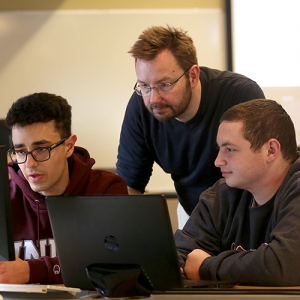It’s uncommon for a literary theory to have material applications. But that didn’t stop Andrew Burkett and company from putting literary critic Saree Makdisi’s idea into practice, creating the Blake Browser.
“Makdisi proposes that instead of experiencing William Blake’s art and poetry traditionally—from beginning to end, page-by-page—we should conceptualize it in a complicated network structure,” Burkett explained.
Blake crafted his works on copper plates capable of producing the same image in many watercolor combinations, making each print distinctive, Burkett added. Makdisi suggests embracing the inherent non-linearity of this process.
The team’s web-based browser, which operates in conjunction with high-resolution images from the William Blake Archive (www.blakearchive.org), does just this.
“We’re creating a new reading experience. Users search for a phrase and the browser pulls up all the plates—and their watercolor permutations—alongside poetry transcriptions,” Burkett said. “A user can browse works, jumping between pieces Blake might have produced years apart and which, traditionally, appeared unrelated.”
The Blake Browser, funded through Valerie Barr’s National Science Foundation grant to create a campus-wide computation initiative, will be used in two of Burkett’s classes this year. It will also be available for public use in the near future.


